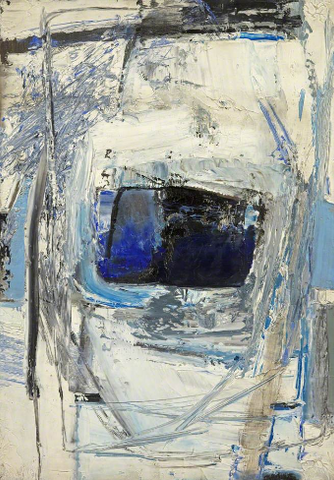Art Appreciation Series: Geraldine Haberfield on Paul Feiler

We asked our artists to share their favourite works from our Permanent Collection. Here is volunteer Geraldine Haberfield's pick
Paul Feiler, Porthleddon Blue, oil on canvas, 50.2 x 30cm
My reaction when I first saw the painting Porthleddon Blue by artist Paul Feiler was, Wow! I stopped in my tracks and gazed in wonder. My second encounter with this painting was no less impressive.
Paul Feiler's inspiration came from the genre of landscape, particularly the inlets and cliffs of South Cornwall. For some time he belonged to the St. Ives artistic fraternity. His style was based on pigmentation, light, colour and space.
The limited colour palette of oils applied on canvas in this painting creates a startling visual feast for the eyes. The artist's skilful use of many varieties of techniques, including the use of both brush and palette knife, multiple layering of paint in varying thicknesses, from impasto to very diluted consistencies and the artist's abrasion, scratch and sgraffito applications in some areas, contrasting with the smooth of others, creates a strong aesthetic impact.
In the many ways Paul Feiler applies the paint to canvas gives the illusion of capturing a fleeting moment in time, which may only be for seconds, but plays out in slow motion, encapsulating your whole being with a sense of infinity and wonder. This is what this painting conveys to me. Breathtaking! I can only gasp in wonder.
After my emotional experience with the painting, Porthleddon Blue, I did some research on the artist Paul Feiler, and discovered he was inspired by Gauguin's understanding, "That you stand vertically and look horizontally".
Gauguin also said, "... a picture should give us an abyss in which the eye is lost". Porthleddon Blue definitely achieves this.
I believe this painting to be a jewel amongst jewels in the crown of the RWA, and is more than worthy of a place in the Permanent Collection. It certainly passes the test of time.
Paul Feiler was born in Germany in 1918 and moved to England in 1936. In 1941 he was an arts teacher at Eastbourne College, and in 1960 became the head of painting at the West of England College of Art in Bristol. He died in 2013.